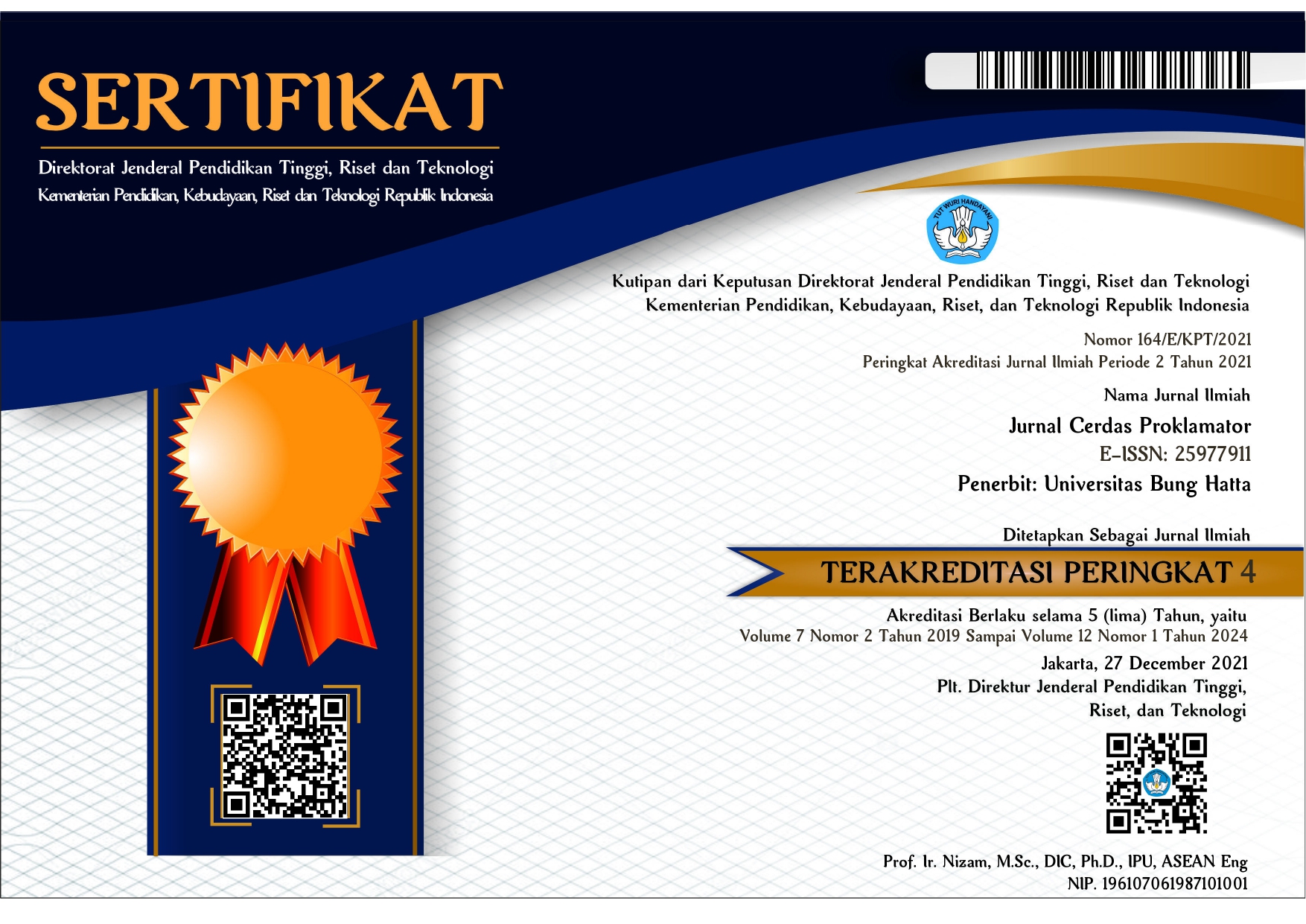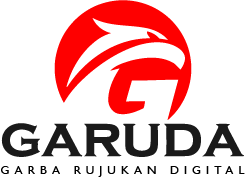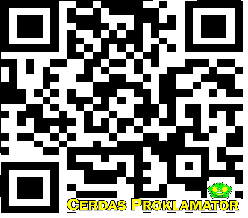PENGEMBANGAN MEDIA ANIMASI INTERAKTIF DENGAN PEMOGRAMAN SCRATCH UNTUK MENGENALKAN KETERAMPILAN BERPIKIR KOMPUTASIONAL
DOI:
https://doi.org/10.37301/cerdas.v10i2.169Keywords:
Media interaktif, Animasi, Berpikir Komputasional, Scratch, Pemograman, IPAAbstract
Banyak macam media pembelajaran yang dibuat oleh calon guru SD selama masa pandemic CoViD-19, mulai dari yang menggunakan teks, gambar diam atau bergerak, suara, video, dan yang dibuat dengan menggunakan powerpoint berupa presentasi sederhana tanpa mengunakan bahasa pemograman. Disini peneliti bertujuan menawarkan pengembangan media animasi interaktif dengan menggunakan pemograman blok dengan aplikasi Scratch pada materi IPA SD yang masih jarang digunakan mahasiswa dan guru karena membutuhkan keterampilan dasar dan logika berpikir seorang programmer. Penelitian ini adalah penelitian pengembangan atau R&D dengan menggunakan model ADDIE. Hasil proyek pemograman media berbasis blok ini diujikan kepada 10 mahasiswa dan guru SD. Instrumen yang digunakan adalah angket validasi ahli materi, ahli media, dan angket tanggapan dari pengguna aplikasi. Hasil penelitian dari media animasi interaktif yang dikembangkan berdasarkan penilaian ahli materi diperoleh skor rata-rata 84,6% yang berada pada kategori baik dan untuk hasil penilaian dari ahli media diperoleh skor rata-rata 81,1% yang dikategorikan sangat baik. Untuk hasil respon mahasiswa dan guru diperoleh skor rata-rata sebesar 86,0% dengan kategori baik. Berdasarkan data hasil penelitian dapat disimpulkan bahwa pengembangan media animasi interaktif menggunakan pemograman blok dengan aplikasi Scratch untuk materi IPA dapat digunakan sebagai media pembelajaran di SD.
References
Aniati, S., Degeng, I. N. S., Sugito, S., & Deta, U. A. (2020). Pengembangan media emodul berbasis multiple intellegences untuk meningkatkan pemahaman konsep struktur bumi. Jurnal Pendidikan Edutama, 7(2), 103. https://doi.org/10.30734/jpe.v7i2.919
Damayanti, K. D., & Kristiantari, M. G. R. (2022). Multimedia Interaktif Berbasis Aplikasi Android dalam Pengenalan Bahasa Inggris Dasar Siswa Kelas VI. Mimbar Ilmu, 27(1), 81–89. https://doi.org/10.23887/mi.v27i1.46132
Egline, M., & Satria, E. (2014). Peningkatan Kemampuan Mengamati Dalam Proses Belajar Mengajar Tema X Rekreasi Dengan Menggunakan Media Visual Siswa Kelas II-A Di SD Negeri 49 Kuranji. Jurnal CERDAS Proklamator, 2(2), 165–175. https://doi.org/https://doi.org/10.37301/jcp.v2i2.7544
Gall, M. D., Borg, W. R., & Gall, J. P. (1996). Educational research: An introduction (6th ed.). Longman Publishing.
Handayani, S. L., & Dahlia, I. (2022). ANIMA-LIE: Android-Based Learning Media on Animal Life Cycles Materials for Elementary School. Jurnal Ilmiah Sekolah Dasar, 6(2), 287–294. https://doi.org/https://doi.org/10.23887/jisd.v6i2.45359
Hernaningtyas, I. S., Susetyarini, R. E., & Widodo, R. (2016). Pengembangan Multimedia Interaktif Ceria (Mic) Pembelajaran Tematik Di Sekolah Dasar. Jurnal Pemikiran Dan Pengembangan Sekolah Dasar (JP2SD), 1(4), 256. https://doi.org/10.22219/jp2sd.vol1.no4.256-266
Hess, A. K. N., & Greer, K. (2016). Designing for engagement: Using the ADDIE model to integrate high-impact practices into an online information literacy course. Communications in Information Literacy, 10(2), 264–282. https://doi.org/10.15760/comminfolit.2016.10.2.27
Ichsan, I., Satria, E., Santosa, T. A., & Yulianti, S. (2022). IMPLEMENTATION OF BLENDED LEARNING IN IMPROVING SCIENCE LITERACY OF SMA / MA IN INDONESIA?: A META-ANALYSIS. 2020, 58–67.
Isnandar, S., Sutomo, B., Pratama, N. A., & Nanda, A. P. (2020). Game Mengenal Huruf Berbasis Android Menggunakan Mit App Inventor Untuk Anak Usia 4-7 Tahun Perkembangan teknologi dan yang pesat memberikan pengaruh yang kuat pada berbagai bidang kehidupan , salah edukasi . Game berjenis edukasi ini bertujuan untuk mema. Alih Teknologi Sistem Informasi (JATSI), 1(1), 1–8.
Januszewski, A., & Michael, M. (2013). Educational technology: A definition with commentary. Routledge.
Ketut Sinta, N. A., Gede Astawan, I., & Made Suarjana, I. (2021). Belajar Subtema 3 Lingkungan dan Manfaatnya dengan Media Pembelajaran Interaktif Berbasis Articulate Storyline 3. MIMBAR PGSD Undiksha, 9(2), 211. https://doi.org/10.23887/jjpgsd.v9i2.35919
Likert, R. (1932). A technique for the measurement of attitudes. Archives of Psychology, 22(140), 55. https://psycnet.apa.org/record/1933-01885-001
Manullang, S. O., & Satria, E. (2020). The Review of the International Voices on the Responses of the Worldwide School Closures Policy Searching during Covid-19 Pandemic. Jurnal Iqra’?: Kajian Ilmu Pendidikan, 5(2), 1–13. https://doi.org/10.25217/ji.v5i2.1036
Maruf, I. R., Nugroho, B. S., Kurniawan, A., Musiafa, Z., & Satria, E. (2022). Virtual Learning Apps: Best Instructional Leadership Practices in the Digital Age Efforts to Improve Student Learning Outcomes. Jurnal Iqra’: Kajian Ilmu Pendidikan, 7(1), 32–43. https://doi.org/https://doi.org/10.25217/ji.v7i1.2187
Morales-Obod, M., Valdez Remirez, M. N., Satria, E., & Indriani, D. E. (2020). Effectiveness on the use of mother tongue in teaching the concepts of fraction among second grade of elementary school pupils. Journal for the Education of Gifted Young Scientists, 8(1), 291–304. https://doi.org/10.17478/JEGYS.637002
Rahmat, A., Syakhrani, A. W., & Satria, E. (2021). Promising online learning and teaching in digital age: Systematic review analysis. International Research Journal of Engineering, IT & Scientific Research, 7(4), 126–135. https://doi.org/https://doi.org/10.21744/irjeis.v7n4.1578
Saddhono, K., Satria, E., Erwinsyah, A., & Abdullah, D. (2019). Designing SwiSH Max Learning Software Based of Multimedia. Journal of Physics: Conference Series, 1364(1). https://doi.org/10.1088/1742-6596/1364/1/012032
Satria, E. (2013). Peningkatan Proses Dan Hasil Belajar Kognitif Pembelajaran IPA Peserta Didik Dengan Pendekatan Rational Inquiry Di Kelas III SD Pembangunan Air Tawar UNP Padang. Jurnal CERDAS Proklamator, 1(1), 31–43. https://doi.org/https://doi.org/10.37301/jcp.v1i1.2270
Satria, E. (2018a). Pendekatan Lingkungan Dengan KIT IPA Seqip Untuk Peningkatan Keterampilan Proses Ilmiah Dan Hasil Belajar Kognitif Siswa. Jurnal Akrab Juara, 3(1), 40–60. http://www.akrabjuara.com/index.php/akrabjuara/article/view/84
Satria, E. (2018b). Projects for the implementation of science technology society approach in basic concept of natural science course as application of optical and electrical instruments’ material. Journal of Physics: Conference Series, 983(1). https://doi.org/10.1088/1742-6596/983/1/012049
Satria, E. (2016). Environment Approach with Science Kit Seqip to Enhancing Students’ Scientific Process Skills, Learning Motivation, and Cognitive Learning Outcomes. Prosiding International Conference on Education Research and Development (ICERD), 832–843. https://doi.org/https://doi.org/10.31227/osf.io/3aejn
Satria, E. (2020). Improving Students’ Scientific Skills, Cognitive Learning Outcomes, and Learning Interest in Natural Science in Class IV by Using Brain Based Learning Approach with Science Kit at SD Negeri 34 Kuranji Padang. Prosiding International Conference on Mathematics, Science and Education (ICMSE), GE10-20. https://doi.org/10.31219/osf.io/9fj6e
Satria, E. (2015). Improving Students’Activities and Learning Outcomes In Natural Science In Class V By Using Somatic Auditory Visual Intellectual (SAVI) with Science KIT Seqip in SD Negeri 25 Seroja Lintau. Prosiding International Conference on Mathematics, Science, Education and Technology (ICOMSET), 458–464. https://www.academia.edu/40412950/improving_students_activities_and_learning_outcomes_in_natural_science_in_class_v_by_using_somatic_auditory_visual_intellectual_savi_with_science_kit_seqip_in_sd_negeri_25_seroja_lintau
Satria, E., & Sari, S. G. (2018). Penggunaan Alat Peraga Dan Kit Ipa Oleh Guru Dalam Pembelajaran Di Beberapa Sekolah Dasar Di Kecamatan Padang Utara Dan Nanggalo Kota Padang. Ikraith-Humaniora, 2(2), 1–8. https://scholar.google.co.id/scholar?hl=id&as_sdt=0%2C5&q=erwinsyah+satria&oq=erwinsyah
Satria, E., & Sopandi, W. (2019). Applying RADEC model in science learning to promoting students’ critical thinking in elementary school. Journal of Physics: Conference Series, 1321(3). https://doi.org/10.1088/1742-6596/1321/3/032102
Satria, E., & Widodo, A. (2020). View of teachers and students understanding’ of the nature of science at elementary schools in Padang city Indonesia. Journal of Physics: Conference Series, 1567(3), 032066. https://doi.org/10.1088/1742-6596/1567/3/032066
Satria, Erwinsyah, Hendrizal, H., Daswarman, D., & Jusar, I. R. (2023). Pelatihan Keterampilan Computational Thinking Bagi Guru SD di Nagari Kapau Kabupaten Agam Sumatera Barat. Jurnal IKRATH-ABDIMAS, 6(2), 45–52. https://doi.org/https://doi.org/10.37817/ikra-ithabdimas.v6i2.2405
Satria, Erwinsyah, Musthan, Z., Cakranegara, P., Arifin, A., & Trinova, Z. (2022). Development of based learning media with App Inventor. Sinkron?: Jurnal Dan Penelitian Teknik Informatika, 7(4), 2400–2407. https://doi.org/https://doi.org/10.33395/sinkron.v7i4.11611
Satria, Erwinsyah, & Sopandi, W. (2022). Creating Science Online Learning Media Using Scratch App Block Programming. KnE Social Sciences, 2022, 372–384. https://doi.org/10.18502/kss.v7i6.10639
Septiana, I. G. Y., Wibawa, I. M. C., Ayu, G., & Sukma, P. (2022). Interactive Multimedia Based on Articulate Storylines in the Topic of Plant Anatomy and Physiology. International Journal of Elementary Education, 6(2), 182–194.
Sudarsana, I. K., Mulyaningsih, I., Kurniasih, N., Haimah, Wulandari, Y. O., Ramon, H., Satria, E., Saddhono, K., Nasution, F., & Abdullah, D. (2019). Integrating Technology and Media in Learning Process. Journal of Physics: Conference Series, 1363(1). https://doi.org/10.1088/1742-6596/1363/1/012060
Sudarsana, I. K., Nakayanti, A. R., Sapta, A., Haimah, Satria, E., Saddhono, K., Achmad Daengs, G. S., Putut, E., Helda, T., & Mursalin, M. (2019). Technology Application in Education and Learning Process. Journal of Physics: Conference Series, 1363(1). https://doi.org/10.1088/1742-6596/1363/1/012061
Sugiyarto, U. S., Wulandari, Y., & Casworo, A. (2021). Media Pembelajaran Powerpoint Interaktif Dalam Pembelajaran Daring Di Sekolah Dasar. Jurnal Cerdas Proklamator, 8(2), 118–123. https://doi.org/10.37301/jcp.v0i0.44
Suharyat, Y., Ichsan, Satria, E., Santosa, T. A., & Amalia, K. N. (2022). Meta-Analisis Penerapan Model Pembelajaran Problem Based Learning Untuk Meningkatkan Ketrampilan Abad-21 Siswa Dalam Pembelajaran IPA. Jurnal Pendidikan Dan Konseling, 4(5), 5081–5088. https://doi.org/https://doi.org/10.31004/jpdk.v4i5.7455
Suharyat, Y., Supriyadi, A., Satria, E., & Santosa, T. A. (2022). Analisis Pembelajaran daring dalam pembelajaran IPA di SMA/MA di Indonesia Pasca Pandemi COVID-19: Sebuah Literatur Review. Jurnal Pendidikan Dan Konseling, 4(5), 1860–1865. https://doi.org/https://doi.org/10.31004/jpdk.v4i5.7311
Suwiantini, L. A., Jampel, I. N., & Astawan, I. G. (2021). Learn Energy Sources with Interactive Learning Multimedia. Jurnal Ilmiah Sekolah Dasar, 5(1), 119. https://doi.org/10.23887/jisd.v5i1.35000
Taufiq, M., Amalia, A. V., Parmin, P., & Leviana, A. (2016). Design of science mobile learning of eclipse phenomena with conservation insight android-based app inventor 2. Jurnal Pendidikan IPA Indonesia, 5(2), 291–298. https://doi.org/10.15294/jpii.v5i2.7375
Wahyuningtyas, D. P., Mayasari, N., Rohmah, S., Satria, E., & Rinovian, R. (2022). ADAPTATION OF ICT LEARNING IN THE 2013 CURRICULUM IN IMPROVING UNDERSTANDING STUDENT ’ S OF DIGITAL. 11(2), 211–218. https://journal.universitaspahlawan.ac.id/index.php/jpdk/article/view/7311/5496
Wulandari, R., Susilo, H., & Kuswandi, D. (2017). Penggunaan multimedia interaktif bermuatan game edukasi untuk siswa sekolah dasar. Jurnal Pendidikan: Teori , Penelitian Dan Pengembangan, 2(8), 1024–1029. http://journal.um.ac.id/index.php/jptpp/article/view/9759/4611
Yulia, R., Susanti, E., & Rizal, R. (2022). Pengembangan Multimedia Interaktif Berbasis Android Pada Materi Elastisitas Bahan untuk SMA Kelas XI. Jurnal Eksakta Pendidikan (Jep), 6(1), 1–10. https://doi.org/10.24036/jep/vol6-iss1/664
Downloads
Published
Issue
Section
License
Copyright (c) 2022 Jurnal Cerdas Proklamator

This work is licensed under a Creative Commons Attribution 4.0 International License.
Copy right in each article belong to the authors.
1. The author acknowledges that the Journal Cerdas Proklamator as a publisher who publishes for the first time with the
Creative Commons Attribution 4.0 International License.
2. The Author can enter the writing separately, manage the non exclusive distribution of manuscripts that have been published in this journal into the other versions (eg sent to the repository of the author's institution, publication in book, etc), by acknowledge that the manuscript was first published in the Jurnal Cerdas Proklamator.
























